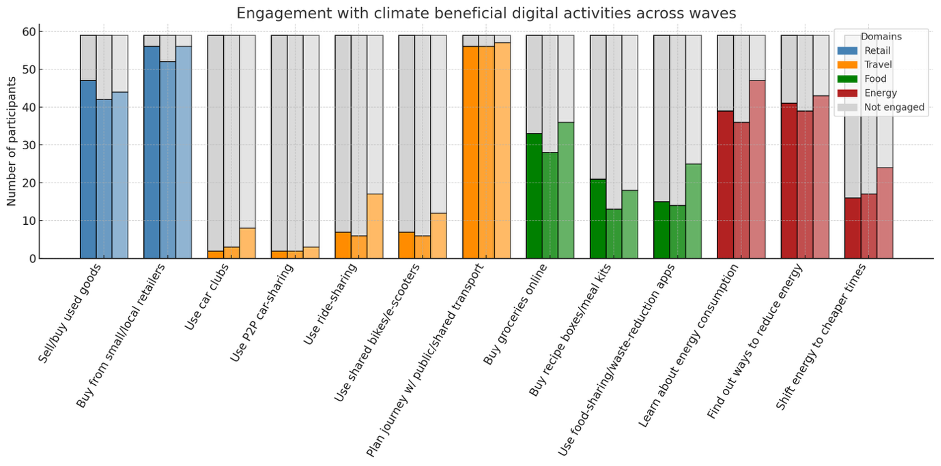Digital technologies shape both high- and low-carbon behaviours in daily life. To understand how and why these behaviours change, we conducted a three-year Living Lab study with 41 households, combining surveys and interviews. This mixed-methods approach captured real changes as households moved through life stages, adapted routines, and encountered new technologies. Guided by the COM-B model, we examined how capability, opportunity, and motivation influence the uptake of digital tools across retail, energy, food, and travel. Our findings show digitalisation’s sustainability potential is real but fragile: engagement is selective, uneven, and shaped by life stage and shifting motivations rather than linear progress.
